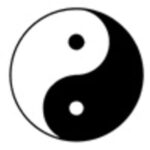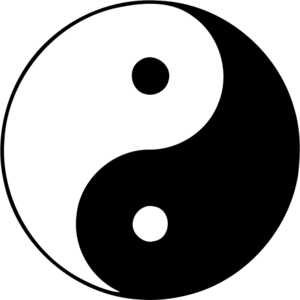No visit to China is complete without visiting the fabled ‘Forbidden City’, located in the heart of Beijing. The Forbidden City, called ‘Gu Gong’ by the Chinese, is located in Beijing, China. Emperor Yang Chang, or ‘Yongzheng’ as he is known in Chinese, built it way back in the early 1400’s. The city was called Forbidden because the emperor lived there, and common citizens weren’t allowed inside. At that time, Yong Chang was considered to be the Son of Heaven. Naturally, he and his family needed a special and unique place to live, away from common eyes.
The Ancient Chinese never seem to do anything on a small scale. In addition to being built as a special place for the emperor and his family to live, the Forbidden City was also built to express the respect, awe and joy the people felt for Yang Chang. Before he came to power, much of China suffered from Mongol domination – they literally became slaves to the Mongols. Yang Chang led his fellow Chinese to rise up and fight against the brutal rule of the Mongols and formed the Ming dynasty.
The Forbidden City is huge – the walls surrounding it are 32 feet high, the grounds inside encompass 183 acres of land and the buildings constructed inside, 75 of them, contain 9,999 rooms! Each outside wall, painted red, the color symbolizing joy, contains a gate, and these four gates allow entrance to the City. The Meridian Gate offers entrance on the south, the East Flowery gate to the east, the West Flowery gate on the west and the Gate of the Divine Genius to the north. The gates on the north/south wall are 960 meters, or 1,056 yards apart, while the gates on the east/west wall are 750 meters, or 825 yards apart. That’s an area equal to the length of tenfootball fields placed side by side and a width of eight football fields set end to end!
Once inside the walls, the city is divided into two major sections. The southern part of the city is called The Outer Court. Here, the Emperor ruled over his country from various offices. The northern part of the city, or The Inner Court, contained the living quarters and areas for use by the royal family.
Work began on the Forbidden City, also known as the Imperial Palace, in 1407 and took fourteen years to build and countless thousands of workers needed to finish it. The emperor’s actual home, called the Palace of Heavenly Purity, was painted purple, representing ‘zi’, which meant ‘center of the universe’. The empress lived in the Palace of Earthly Tranquility.
The city is filled with many wondrous examples of Chinese architecture, artifacts and rare treasures lovingly saved and preserved from five centuries of rulers. These items and other curiosities continue to enchant native visitors and foreigners alike.
The wall that surrounds the city itself is a delight, in that its ancient builders tried to think of everything before they even started building. The wall is 8.6 meters (9 ½ yards) wide at its base, but slopes to 6.6 meters (a little over 7 yards) at the top. Why did they build a slanted wall? Why, to keep people from being able to easily climb it and peek inside!
Bricks used to build the wall surrounding the city were made by combining lime and glutinous rice. Glutinous rise is a short-grain rice that becomes moist, sticky and firm after its been cooked, and in case you were wondering, yes, it’s edible! The mortar holding the bricks together was created using this sticky rice and egg whites mixed together. Those bricks and mortar, despite its dubious ingredients, are extremely strong, as is obvious by the fact that the structure is still standing today!
The tallest and largest building within the city walls is the Hall of Supreme Harmony. This building is located in the center of the city, and it was forbidden to build anything larger or taller within the city itself. This building was used as the main offices of the ruler. Most of the roofs on the buildings within the Forbidden City are painted yellow, the symbol of the Royal Family. Because the inner buildings are constructed of wood, huge bronze cauldrons filled with water were placed throughout the interior of the complex in case of fire.
The roofs of the buildings are also unique and special in Chinese lore. The roofs were originally covered with wood tiles held in place by wooden nails, but without lightning rods to take the brunt of lightning strikes, the roofs and the buildings were in danger of easily catching fire. It was decided to place symbols of the fishtail star upon the roofs to prevent fires – later, glazed tiles shaped in the forms of ‘lucky’ animals replaced them. Eventually, the number of animals in any particular roof represented the sonority of the building and its owner. The Hall of Supreme Harmony, for example, had the most animals on its roof. No other building in the country was allowed to have more animals on its roof than this one. The animals, both mythical and real, were believed to protect the emperor, bring good luck and to ensure peace and stability not only within the City, but in the entire country.
The Forbidden City is also home to the Nine Dragon Screen. It’s not really a screen like the one found in windows today, but rather a structure that stands 6 meters high and 31 meters long. Built in 1771 during the reign of Qianlong, the screen is made up of painted tiles. There’s a legend attached to this work of art. According to this legend, this screen is made up of 270 glazed tiles. On the day before the Emperor himself was supposed to view the structure, the bottom portion of one of the dragon tiles fell off. The craftsmen risked beheading if the Emperor saw such a flaw. The men were probably quite frantic, but one of the craftsmen, a carpenter, quickly designed a wood copy of the tile and fixed it into place. Luckily, the Emperor never noticed the fix and the craftsmen all kept their heads.
Another interesting site within the city is that of the Huge Stone Carving. Located behind the Hall of Preserving Harmony, this marble statue of dragons playing with pearls stands 17 meters long and almost 2 meters thick. It weighs a whopping 250 tons. During the Ming and Qing dynasties, it was considered a holy object and anyone caught touching it could be executed. If anyone’s mother told a youngster ‘Don’t Touch’, it’s hoped that he or she obeyed.
The Forbidden City is the largest complex of its kind in the world. The architecture and design of its buildings represents a quality and craftsmanship of its builders that is unequalled to this day. It is also considered the world’s most centralized museum of Chinese art and examples of Chinese culture, history and lore. As with the Great Wall of China and the unearthed Terra Cotta Warriors, the Forbidden City was listed by the United Nations Educational, Scientific and Cultural Organization as a World Cultural Heritage Site, and is now one of the most popular tourist attractions in the world.



